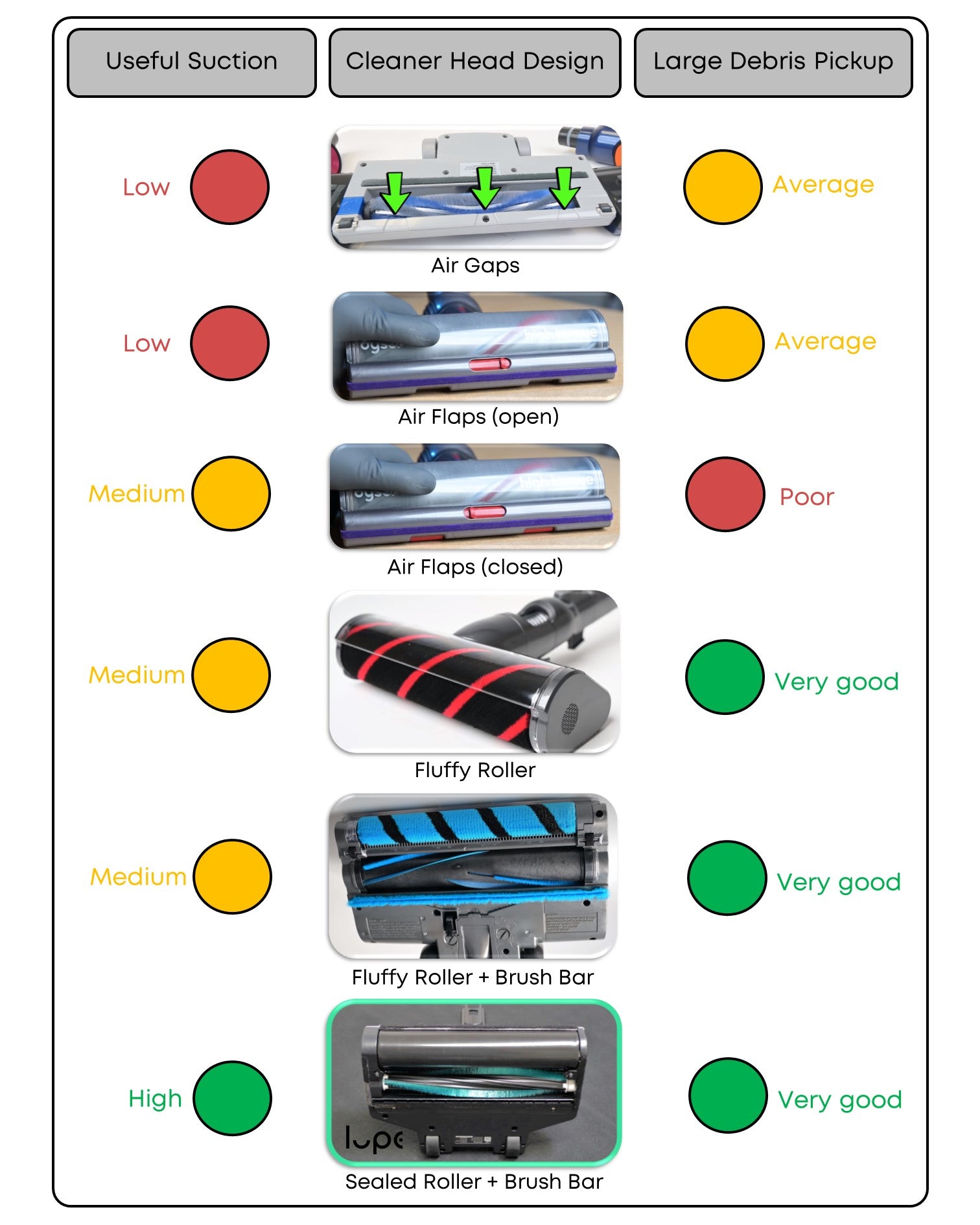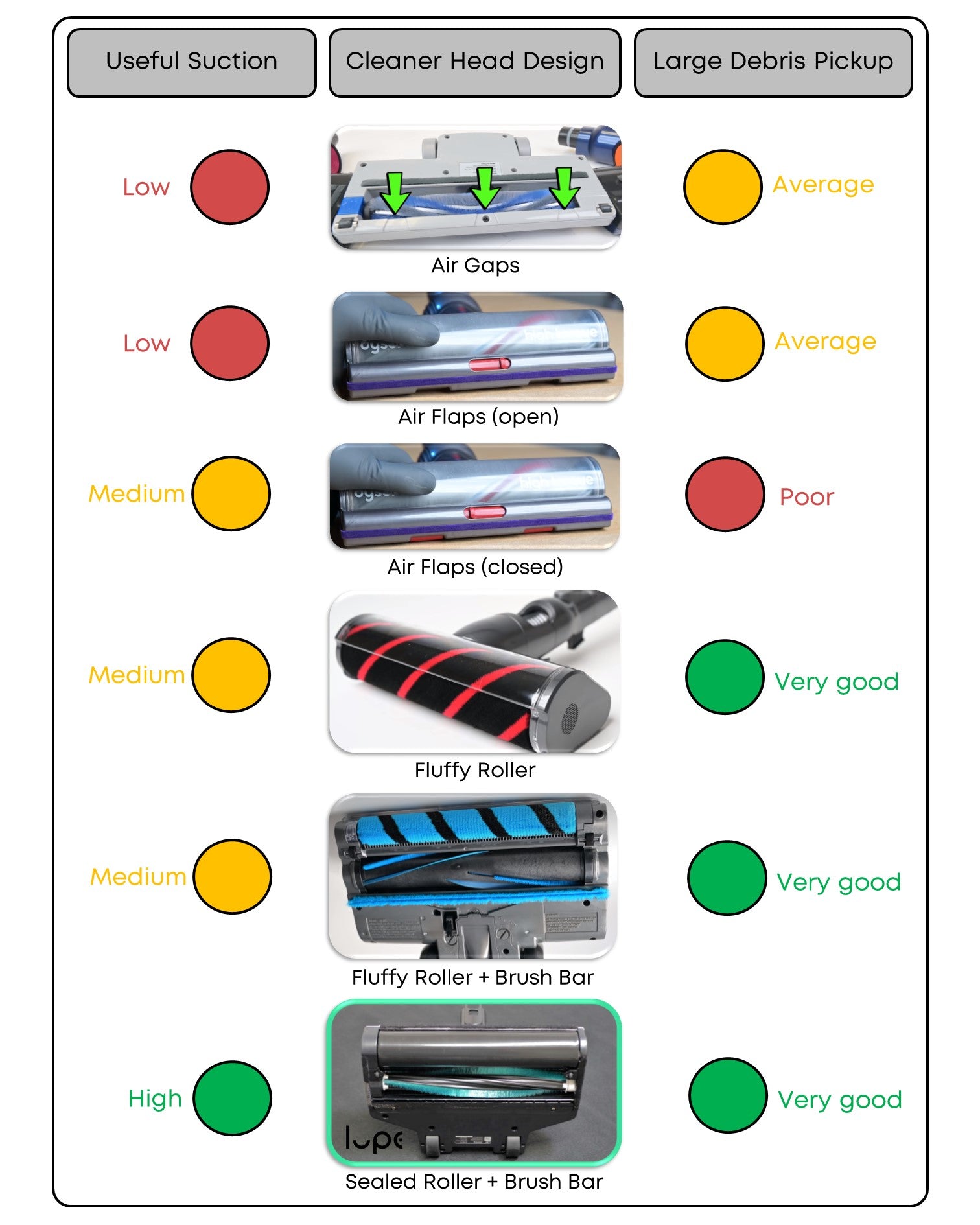Have you ever wondered how a vacuum cleaner sucks up all the dirt and debris from your floors and carpets? The answer lies in the suction power of the machine, which is measured in a specific way to ensure maximum efficiency and cleaning power.
In this article, we’ll explore the science behind suction in vacuum cleaners and take a closer look at how it’s measured. From understanding the technical jargon to learning practical tips for maintaining your vacuum’s suction power, you’ll gain a deeper appreciation for the humble appliance that keeps your home clean and tidy. So let’s dive in and discover the secrets of suction in vacuum cleaners!

How Is Suction Measured in a Vacuum Cleaner?
If you’re in the market for a new vacuum cleaner, you’ve probably heard the term “suction power” tossed around. But what exactly does that mean? And how is suction measured in a vacuum cleaner? In this article, we’ll take a closer look at this essential component of any home cleaning arsenal.
What is suction power?
When we talk about suction power in a vacuum cleaner, we’re referring to the strength with which the machine can pull debris and dirt off of surfaces. This is essential for effective cleaning, as a vacuum with weak suction won’t be able to pick up much dirt or debris.
The suction power of a vacuum cleaner is typically measured in a unit called “air watts.” This is a measure of the amount of power the motor can generate, and is a good indicator of the machine’s overall suction strength.
There are a few other factors that can affect suction power, including the design of the vacuum cleaner’s nozzle and the quality of its filters. We’ll explore these in more detail below.
How is suction power measured?
As we mentioned above, suction power is typically measured in air watts. This is a measure of the amount of power the motor can generate, and is calculated by multiplying the machine’s airflow (in cubic feet per minute, or CFM) by its suction (in inches of water lift).
To get a more accurate measurement of suction power, some manufacturers also perform a test called the ASTM F558-17 test. This involves measuring the vacuum’s ability to pick up dirt from a carpet at a set rate of speed.
It’s worth noting that there is no universal standard for measuring suction power, so it’s important to compare machines based on their air watts and other features rather than relying solely on manufacturer claims.
Factors that affect suction power
As we mentioned earlier, there are a few other factors that can affect a vacuum cleaner’s suction power besides its motor strength. Here are a few of the most important:
- Nozzle design: The shape and size of the nozzle can affect how much suction power is delivered to the cleaning surface. A nozzle with a wide opening may be better for cleaning large areas, while a narrower nozzle can provide more concentrated suction for tougher messes.
- Filter quality: If a vacuum’s filters are clogged or of poor quality, this can restrict airflow and reduce suction power. Look for machines with high-quality filters that are easy to clean or replace.
- Hose length and diameter: The length and diameter of the vacuum’s hose can also affect how much suction power is delivered to the cleaning surface. A longer hose can be helpful for cleaning hard-to-reach areas, but may also reduce overall suction power.
The benefits of strong suction power
Why is strong suction power so important in a vacuum cleaner? Here are a few of the key benefits:
- Efficient cleaning: A vacuum with strong suction power can pick up dirt and debris more quickly and efficiently, making cleaning faster and easier.
- Better cleaning results: With strong suction power, a vacuum can more effectively remove dirt and debris from carpets, upholstery, and other surfaces.
- Longer-lasting machine: A vacuum with strong suction power is less likely to get clogged or bogged down, which can prolong the life of the machine.
Conclusion
Suction power is a crucial component of any vacuum cleaner, and it’s important to choose a machine with adequate power for your needs. By understanding how suction power is measured and what factors can affect it, you can make an informed decision when shopping for a new vacuum.
Frequently Asked Questions
If you are curious about how suction is measured in a vacuum cleaner, you have come to the right place. In this section, we have answered some of the most commonly asked questions about measuring suction power in a vacuum cleaner.
How is suction power measured in a vacuum cleaner?
The suction power of a vacuum cleaner is measured in air watts, which is a unit of measurement that takes into account both the airflow rate and the pressure of the vacuum cleaner. The higher the air watts, the more powerful the suction of the vacuum cleaner. Airflow rate, on the other hand, is measured in cubic feet per minute (CFM) and determines the amount of air that the vacuum cleaner can move. Pressure, on the other hand, is measured in inches of water, and it is the force that the vacuum cleaner uses to lift dirt and debris off the floor.
Therefore, when you are looking for a vacuum cleaner with powerful suction, you should look for one with a higher air watts rating, since this takes into account both the airflow rate and pressure of the vacuum cleaner.
How can I test the suction power of my vacuum cleaner?
If you want to test the suction power of your vacuum cleaner, you can use a simple method. First, place a piece of paper or a tissue on the floor, and turn on the vacuum cleaner. Then, hold the hose over the paper or tissue and see if it gets sucked up. If the paper or tissue does not get sucked up, it may indicate that the suction power of your vacuum cleaner is not strong enough.
However, keep in mind that this is not a precise method of measuring suction power, since it does not take into account the airflow rate and pressure of the vacuum cleaner, which are also important factors to consider when measuring suction power.
What factors affect the suction power of a vacuum cleaner?
The suction power of a vacuum cleaner can be affected by several factors, including the design of the vacuum cleaner, the type of filter used, and the length and diameter of the hose. For example, a vacuum cleaner with a clogged filter may not have as much suction power as one with a clean filter. Similarly, a vacuum cleaner with a longer or narrower hose may not have as much suction power as one with a shorter or wider hose.
Other factors that can affect suction power include the type of flooring you are cleaning, the age of the vacuum cleaner, and the amount of use it has had over time.
What is the difference between suction power and airflow rate?
Suction power and airflow rate are two different measurements that are used to determine the performance of a vacuum cleaner. Suction power, as we mentioned earlier, is measured in air watts and takes into account both the airflow rate and pressure of the vacuum cleaner. Airflow rate, on the other hand, is measured in cubic feet per minute (CFM) and determines the amount of air that the vacuum cleaner can move.
While both suction power and airflow rate are important factors to consider when choosing a vacuum cleaner, suction power is generally considered to be a more accurate measure of a vacuum cleaner’s performance, since it takes into account both the airflow rate and pressure.
Can a vacuum cleaner have too much suction power?
Yes, a vacuum cleaner can have too much suction power, which can be a problem if you are trying to clean delicate surfaces such as curtains or upholstery. In these cases, the strong suction of the vacuum cleaner can cause damage to the fabric.
However, most modern vacuum cleaners come with adjustable suction settings, which allow you to adjust the suction power to suit the surface you are cleaning. So, if you are cleaning delicate surfaces, you can simply reduce the suction power to avoid causing damage.
Working Vacuum Test Gauge -Vacuum Cleaner Specifications Explained
In conclusion, suction is an essential feature of a vacuum cleaner. It is the force that helps to lift dirt, dust, and other debris from surfaces. Measuring suction in a vacuum cleaner is crucial in determining the effectiveness of the machine.
One common method of measuring suction is using air watts. This measurement takes into account both the suction and airflow of the vacuum cleaner. Another method is using water lift, which measures the height that the vacuum can lift a column of water.
Overall, understanding how suction is measured in a vacuum cleaner can help you make an informed decision when selecting a machine for your cleaning needs. Consider the different methods of measuring suction and choose a vacuum cleaner that has the right balance of suction power, airflow, and other features that meet your requirements.

